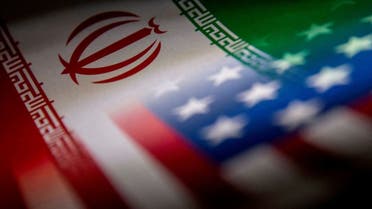
The relationship between Iran and the United States is in a constant state of flux, driven by geopolitical developments, shifting alliances, and evolving diplomatic negotiations. Recent news highlights the complexities of this relationship and the ongoing efforts by both nations to navigate their differences. This article provides an overview of the latest developments in US-Iran relations, focusing on key events, current issues, and potential future scenarios.
Diplomatic Efforts and Nuclear Talks
1. Renewed Negotiations: Recent weeks have seen a resurgence in diplomatic efforts between the US and Iran, particularly concerning the Joint Comprehensive Plan of Action (JCPOA). Talks aimed at reviving the 2015 nuclear deal have gained momentum, with both sides expressing a willingness to find common ground. The discussions have focused on issues such as sanctions relief, nuclear enrichment limits, and verification mechanisms. However, significant obstacles remain, including disagreements over the scope of sanctions relief and Iran’s compliance with the agreement.
2. Diplomatic Shuttle: International diplomats, including representatives from the European Union and other signatories to the JCPOA, have been actively involved in shuttle diplomacy to facilitate dialogue between the two nations. Recent negotiations have also included discussions on potential confidence-building measures to address concerns on both sides and create a more conducive environment for talks.
Economic and Sanctions Landscape
1. Oil Exports and Market Reactions: The global oil market continues to be influenced by the state of US-Iran relations. Recent developments have included fluctuations in oil prices due to uncertainties surrounding Iranian oil exports. The impact of sanctions on Iran’s oil industry remains a critical issue, with ongoing debates about the potential for adjustments to the sanctions regime. The US has maintained its sanctions on Iran’s oil sector, aiming to limit its revenue streams and leverage pressure in negotiations.
2. Humanitarian Impact and Sanctions Relief: There have been discussions about the humanitarian impact of US sanctions on https://tnchronicle.com/, particularly in light of the ongoing economic challenges faced by the Iranian population. Some US policymakers have proposed targeted sanctions relief to alleviate economic hardships while maintaining pressure on Iran’s nuclear program and regional activities. The debate continues over the balance between humanitarian concerns and the enforcement of sanctions.
Regional Dynamics and Security Concerns
1. Middle East Tensions: Iran’s involvement in regional conflicts remains a significant point of contention in US-Iran relations. Recent developments in Syria, Yemen, and Lebanon have highlighted Iran’s continued influence and support for various militant groups. The US has expressed concerns about Iran’s role in exacerbating regional instability and has called for a reduction in its military activities and support for proxy forces.
2. Security Incidents: There have been reports of increased security incidents in the Middle East, including attacks on shipping lanes and infrastructure. The US and its allies have attributed some of these incidents to Iranian-backed entities or proxies. The heightened security environment has further strained relations and underscored the need for effective diplomatic and security responses.
Political and Public Sentiment
1. US Domestic Politics: The Biden administration’s approach to Iran has been characterized by a focus on diplomacy and multilateral engagement. Recent statements from the administration have reiterated the commitment to reengage with Iran and explore potential pathways to resolve differences. However, domestic political considerations, including congressional debates and public opinion, continue to influence the administration’s policies and strategies.
2. Iranian Internal Dynamics: In Iran, domestic politics and public sentiment play a crucial role in shaping foreign policy. Recent political developments, including internal power dynamics and public reactions to economic conditions, impact Iran’s approach to negotiations and its broader international strategy. The Iranian government faces pressures both from hardliners advocating a more confrontational stance and moderates seeking diplomatic solutions.
Looking Ahead
The future of US-Iran relations will be shaped by several key factors:
1. Negotiation Outcomes: The success or failure of ongoing negotiations will play a critical role in determining the trajectory of US-Iran relations. Achieving a durable agreement on nuclear issues and addressing other areas of contention will be essential for improving bilateral relations and fostering regional stability.
2. Economic Adjustments: The impact of sanctions and potential adjustments to the sanctions regime will influence the economic conditions in both countries. Economic stability and growth may affect the willingness and capacity of both sides to engage constructively and find mutually acceptable solutions.
3. Regional Stability: The broader Middle East region’s stability will continue to be a significant factor in US-Iran relations. Developments in regional conflicts, security incidents, and shifting alliances will impact the dynamics between the two nations and their ability to address shared challenges.
In conclusion, the relationship between Iran and the United States remains complex and fluid, with recent developments highlighting both challenges and opportunities. As diplomatic efforts continue and the geopolitical landscape evolves, the future of US-Iran relations will be closely watched by policymakers and observers worldwide. The ability to navigate these challenges and find common ground will be crucial for achieving long-term stability and cooperation in the region.



.jpeg)


